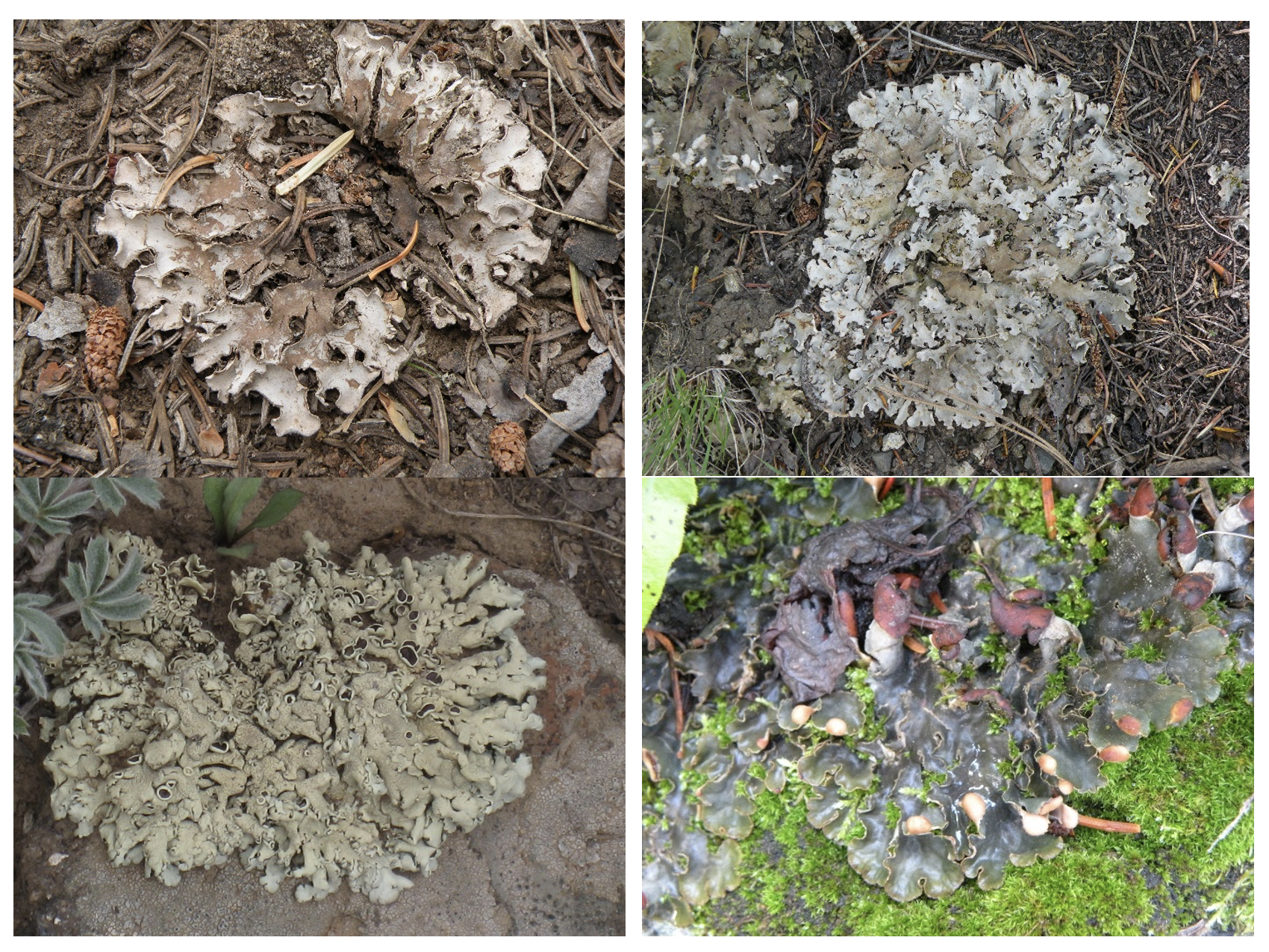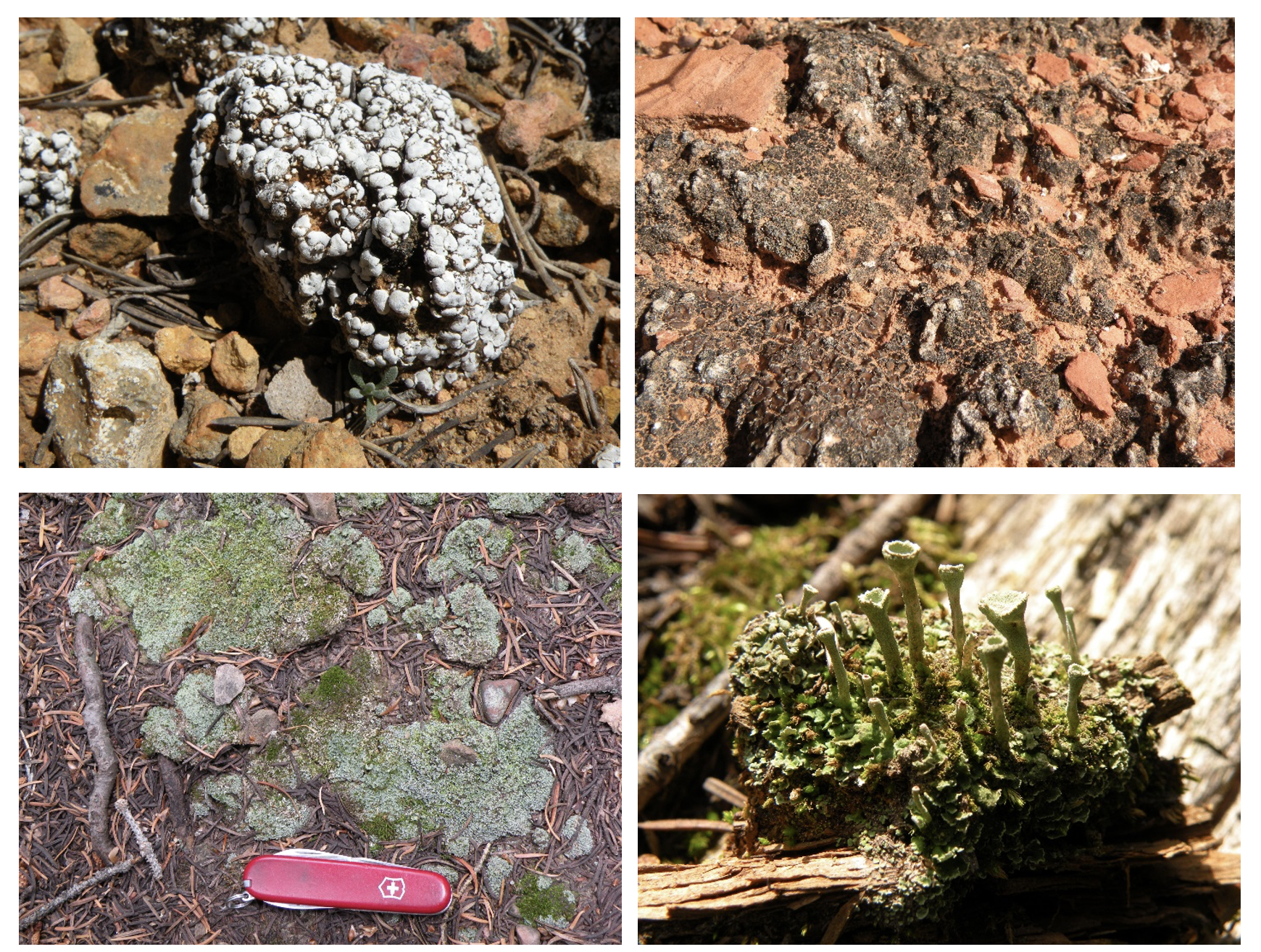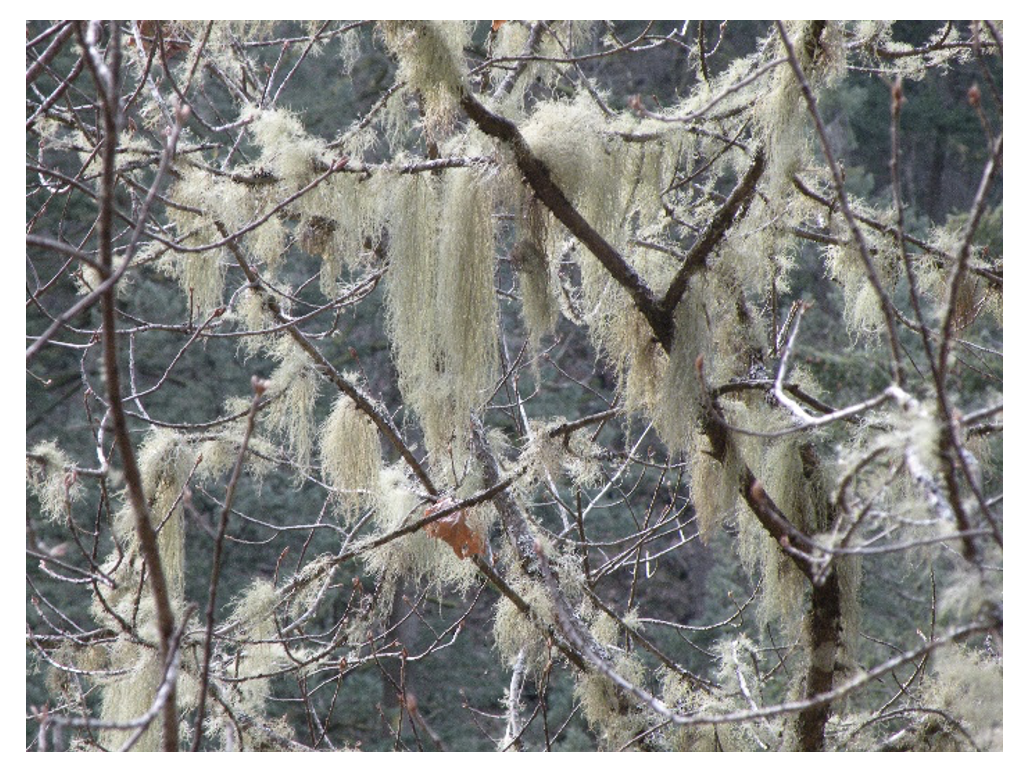Lichens
No discussion of the fungi is complete without (at least) a brief discussion of lichens. Lichens are a common component of terrestrial ecosystems found from the Equator to the Polar Regions. A lichen is a unique type of symbiotic partnership that forms between a multicellular fungus and a unicellular photoautotroph. The fungal partner is referred to as the mycobiont, and the photoautotrophic partner is the photobiont.
The Mycobiont: The fungal partner is almost always an ascomycete fungus (there are about a dozen lichenized basidiomycetes, as well as a few others). Lichenized fungi are found only in lichens (i.e. not as “free-living” individuals), and each type of lichen contains a different species of fungus. For these reasons, the scientific name for the fungus is applied to the lichen. There are between 14,000 and 17,000 named and described types of lichens, which accounts for about 15% of known ascomycete species.
The Photobiont: The photobiont is usually a unicellular green alga (this is the case in more than 90 % of lichens), but in some it is a cyanobacterium (about 8% of lichens). A small number of lichens contain photoautotrophs from other groups (e.g. stramenopiles: yellow-green algae). The unicellular photoautotrophic partner is not limited to the lichen partnership and may be found in a non-lichenized “free-living” state. There are only a small number of photobiont species (about 100) that are found in lichens, so for the photobiont partner this is a non-exclusive relationship. Some lichens contain more than one species of photobiont in different portions of their thallus.
Symbiotic Relationship: The nature of the lichen symbiotic relationship continues to be the subject of research and debate. Although it is typically described as a mutualistic relationship, the fitness of the photobiont may be reduced, leading some lichenologists to describe the relationship as a form of controlled parasitism.
Lichen Ecology: Lichens are often pioneer “species” that are among the first to colonize bare rock or other “available” microhabitats. Many grow on the soil surface (where they are common components of the cryptobiotic soil community), or tree trunks. The cyanolichens (that have cyanobacterium photobionts) are important sources of fixed nitrogen for the nitrogen cycle in ecosystems. Lichens are very sensitive to variation in microclimates. Their extreme sensitivity to certain air pollutants has made them useful as indicators of air quality.
Economic Uses: Economically, lichens are used as food by animals (reindeer graze on lichens in the Arctic Circle) and humans. Some lichens have been used as the source of dyes.
Lichen Organization: Cultured separately, both mycobionts and photobionts are amorphous, but together they form a distinctive and complex body called a thallus. Thallus organization is distinctive, permitting recognition of many different types of lichens on a morphological basis. Lichens also form a number of secondary metabolites that are useful in lichen identification. Secondary metabolites and thallus organization are determined by the mycobiont. Most lichen thalli have an upper cortex formed by tightly interwoven fungal hyphae, and a central medulla formed from loosely woven hyphae. Some lichens also have a lower cortex. The unicellular photobionts are usually found in the upper (and sometimes lower) portions of the medulla. Recently (2016) a third symbiont was identified from a lichen: a unicellular basidiomycete (yeast) located in the upper cortex. Since this initial finding, basidiomycete yeasts have been identified from several additional lichens and may turn out to be widespread. In 2019, a fourth symbiont (a second basidiomycete) was identified in the thallus of the wolf lichen (Letharia). These exciting new findings may be leading to a fundamental re-thinking of the lichen association in the future.
The mycobiont is also responsible for the formation of sexual and asexual reproductive structures. If present, these are useful in lichen identification.
The growth of many lichens is relatively slow, depending on local conditions. On exposed rock surfaces the leading edge of a lichen thallus may expand just a few millimeters each year. Calibration of the lichen growth rate has become a useful tool for dating how long a rock surface has been exposed. This technique of dating surfaces is called lichenometry, and it is used by geologists, anthropologists, and geographers.
Lichen Morphology: Although highly variable, most lichen thalli can be categorized as being crustose, foliose, squamulose or fruticose. Brief descriptions:
Crustose lichens are flattened and adhere tightly to their substrate. They lack a lower cortex, with the medulla attached directly to the substrate. They generally cannot be detached from their substrate without being destroyed. They grow outwards from a central point, and based upon their size some are considered to be extremely old (perhaps 1,000 years old in some cases). Crustose lichens are commonly found on solid surfaces such as rocks and trees.

Foliose lichens are dorsoventrally flattened and leaf-like in appearance. They have a lower cortex, often with root-like extensions (rhizines) that attach them to their substrate (commonly soil, branches, or tree trunks). They are easily separated from their substrate.

Squamulose lichens form a small scale-like thallus that is not highly lobed. They adhere more or less tightly to their substrate. Some form vertical, trumpet-like reproductive structures.

Fruticose lichens are usually thread-like or have cylindrical portions of the thallus. They are often heavily branched and anchored to solid (bark or stone) surfaces.


